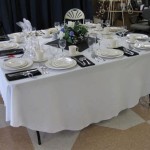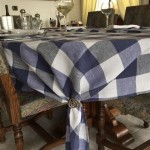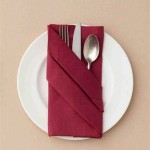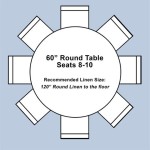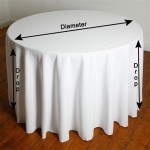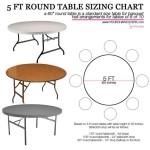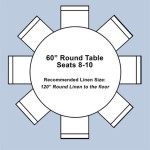How To Make A Garden Table From Scaffold Boards
Constructing a garden table from scaffold boards is a rewarding project that combines functionality with rustic aesthetics. Scaffold boards, readily available and relatively inexpensive, offer a robust and durable material for creating a substantial outdoor table. This article provides a comprehensive guide to building a garden table using scaffold boards, detailing the necessary materials, tools, and step-by-step instructions.
Key Point 1: Gathering Materials and Tools
The initial phase involves securing the appropriate materials and tools. This groundwork is crucial to ensure a seamless and efficient construction process. The quality and suitability of the materials directly impact the final product's longevity and visual appeal.
Scaffold Boards: The primary material is the scaffold boards themselves. The number of boards required depends on the desired size of the table. Standard scaffold boards typically measure around 225mm wide and 38mm thick, with lengths varying from 1.5 meters to 3.9 meters. Opt for boards that are relatively straight and free from excessive warping or damage. Reclaimed scaffold boards offer a characterful, weathered appearance, while new boards provide a cleaner, more uniform look. If using reclaimed boards, thorough cleaning and treatment are essential.
Table Legs: The legs provide the table's support and stability. Several options are available, including prefabricated metal legs, wooden legs, or even repurposed materials. Metal legs offer a modern industrial aesthetic and often come with adjustable feet for leveling the table on uneven surfaces. Wooden legs can be constructed from timber similar to the scaffold boards, creating a cohesive look. Consider the desired height of the table when selecting or constructing the legs. A standard table height is around 75cm.
Fixings: Adequate fixings are essential for a secure and durable table. Consider the following:
- Screws: Use exterior-grade screws suitable for wood. The length of the screws should be sufficient to penetrate the scaffold boards and the table legs securely. For attaching the tabletop boards, screws measuring at least 50mm are recommended. For attaching the legs, longer and thicker screws—such as 75mm or 100mm—may be necessary, depending on the leg design.
- Wood Glue: Applying exterior-grade wood glue to the joints before screwing them together significantly enhances the strength and durability of the table.
- Brackets (Optional): Metal brackets can be used to reinforce the joints between the tabletop and the legs, adding extra stability. These are particularly useful if the table is intended for heavy use.
Finishing Materials: To protect the wood and enhance its appearance, appropriate finishing materials are required:
- Wood Preservative: Applying a wood preservative before any other finish helps protect the timber from rot, insects, and fungal decay.
- Exterior Wood Stain or Paint: Stain allows the natural grain of the wood to show through, while paint provides a solid color finish. Choose a product specifically formulated for exterior use.
- Exterior Varnish or Oil: Applying a varnish or oil provides a protective layer that helps to repel water and protect the wood from UV damage. Exterior varnish offers a durable, glossy finish, while oil provides a more natural, matte finish.
Tools: The following tools are necessary for constructing the garden table:
- Measuring Tape: Essential for accurate measurements.
- Pencil: For marking cutting lines and screw locations.
- Saw: A circular saw or hand saw for cutting the scaffold boards to the desired length. A miter saw provides more precise and angled cuts.
- Drill/Driver: For pre-drilling pilot holes and driving screws.
- Sander: An orbital sander or sanding block for smoothing the surface of the wood.
- Clamps: For holding the boards together while the glue dries.
- Paintbrushes or Sprayer: For applying wood preservative, stain, paint, or varnish.
- Safety Glasses: To protect the eyes from dust and debris.
- Gloves: To protect the hands from splinters and chemicals.
- Work Gloves: Protecting hands from wood splinters
Key Point 2: Preparing the Scaffold Boards
Proper preparation of the scaffold boards is crucial for achieving a high-quality finish and ensuring the longevity of the table. This includes cleaning, sanding, and cutting the boards to the desired dimensions.
Cleaning: If using reclaimed scaffold boards, thoroughly clean them to remove any dirt, grime, or debris. A stiff brush and soapy water can be used for this purpose. For stubborn stains or residues, a pressure washer may be necessary. Allow the boards to dry completely before proceeding.
Sanding: Sanding the scaffold boards smooths the surface, removes any splinters, and prepares the wood for finishing. Start with a coarse-grit sandpaper (e.g., 80-grit) to remove any imperfections or rough areas. Then, progress to a medium-grit sandpaper (e.g., 120-grit) to further smooth the surface. Finally, finish with a fine-grit sandpaper (e.g., 220-grit) to create a smooth, polished surface. Sand in the direction of the wood grain and use a sanding block or orbital sander for best results. Pay particular attention to the edges and corners of the boards.
Cutting: Measure and mark the scaffold boards to the desired length for the tabletop. Use a saw to cut the boards to size. Ensure the cuts are straight and accurate. If creating a table with a specific shape, such as a round or oval table, use a jigsaw to cut the boards to the desired shape after they have been joined together.
Edge Treatment: Consider how to treat the edges of the scaffold boards. Options include:
- Straight Edges: Leaving the edges straight provides a clean, modern look.
- Rounded Edges: Rounding the edges with a router or sanding block softens the appearance and makes the table more comfortable to sit around.
- Beveled Edges: Beveling the edges with a router or plane creates a decorative detail.
Key Point 3: Assembling the Table
The assembly stage involves joining the prepared scaffold boards to form the tabletop and attaching the legs to provide support. Precise execution is critical for a structurally sound and visually appealing table.
Joining the Tabletop Boards: Arrange the scaffold boards side by side to form the tabletop. Ensure the boards are aligned and that there are no gaps between them. Apply wood glue to the edges of the boards that will be joined together. Clamp the boards together tightly to ensure a strong bond. Allow the glue to dry completely according to the manufacturer's instructions. Once the glue has dried, remove the clamps and sand the tabletop to ensure a smooth, even surface.
Adding Support Braces (Optional): For larger tables, consider adding support braces underneath the tabletop to prevent sagging or warping. These braces can be made from additional pieces of scaffold board or timber. Attach the braces to the underside of the tabletop using screws and wood glue, spacing them evenly along the length of the table.
Attaching the Legs: Position the table legs at the desired locations on the underside of the tabletop. Ensure the legs are evenly spaced and that they are perpendicular to the tabletop. If using prefabricated metal legs, follow the manufacturer's instructions for attaching them. Typically, this involves screwing the legs into pre-drilled holes in the tabletop.
If using wooden legs, attach them to the tabletop using screws and wood glue. Predrill pilot holes to prevent the wood from splitting. For added strength and stability, consider using metal brackets to reinforce the joints between the legs and the tabletop. Attach the brackets to the legs and the tabletop using screws.
Checking for Stability: Once the legs are attached, flip the table over and check for stability. Ensure the table is level and that there are no wobbles. If the table is uneven, use adjustable feet (if fitted to the legs) to level it. If the legs are not adjustable, shims can be used to level the table on uneven surfaces.
Finishing the Table: Once the table is assembled and stable, apply the chosen finishing materials to protect the wood and enhance its appearance. Begin by applying a wood preservative to all surfaces of the table, including the underside. Allow the preservative to dry completely according to the manufacturer's instructions.
Next, apply the chosen exterior wood stain or paint to the table. Apply multiple coats for a richer, more durable finish, allowing each coat to dry completely before applying the next. Finally, apply a coat of exterior varnish or oil to protect the wood from water and UV damage. Again, apply multiple coats for a more durable finish. Allow the finish to dry completely before using the table.
Additional Considerations: Consider adding additional features to the table to enhance its functionality and appearance. Options include:
- Umbrella Hole: If you plan to use the table with an umbrella, drill a hole in the center of the tabletop to accommodate the umbrella pole.
- Bench Seating: Create matching benches from scaffold boards to provide seating for the table.
- Storage Shelf: Add a shelf underneath the tabletop to provide storage space for outdoor items.
- Decorative Details: Add decorative details, such as carvings or inlays, to personalize the table.
By following these steps, a durable and aesthetically pleasing garden table can be crafted from scaffold boards, providing a focal point for outdoor gatherings and enhancing the ambiance of any garden space.

How To Make A Table Out Of Scaffold Boards Upcycling Safe
.jpg.aspx?strip=all)
How To Make A Table Out Of Scaffold Boards Upcycling Safe

Thrifty Diy How To Upcycle Scaffolding Boards Into A Garden Table My Life By Cassie Fairy Inspiration For Living Lovely On Budget
.jpg.aspx?strip=all)
How To Make A Table Out Of Scaffold Boards Upcycling Safe

Makeover A Dining Table Made From Scaffold Boards Roses And Rolltops

Diy How To Make Your Own Outdoor Seat From Scaffolding Planks My Thrifty Life By Cassie Fairy Inspiration For Living A Lovely On Budget

Thrifty Diy How To Upcycle Scaffolding Boards Into A Garden Table My Life By Cassie Fairy Inspiration For Living Lovely On Budget

Diy Scaffold Board Garden Bench Project How To Make Your Own Outdoor Seat From Scaffolding Planks

My Reclaimed Wooden Garden Table Made From Scaffolding Boards And Fence Posts

How To Make An Industrial Rustic Scaffold Board Dining Table And Bench
Related Posts

